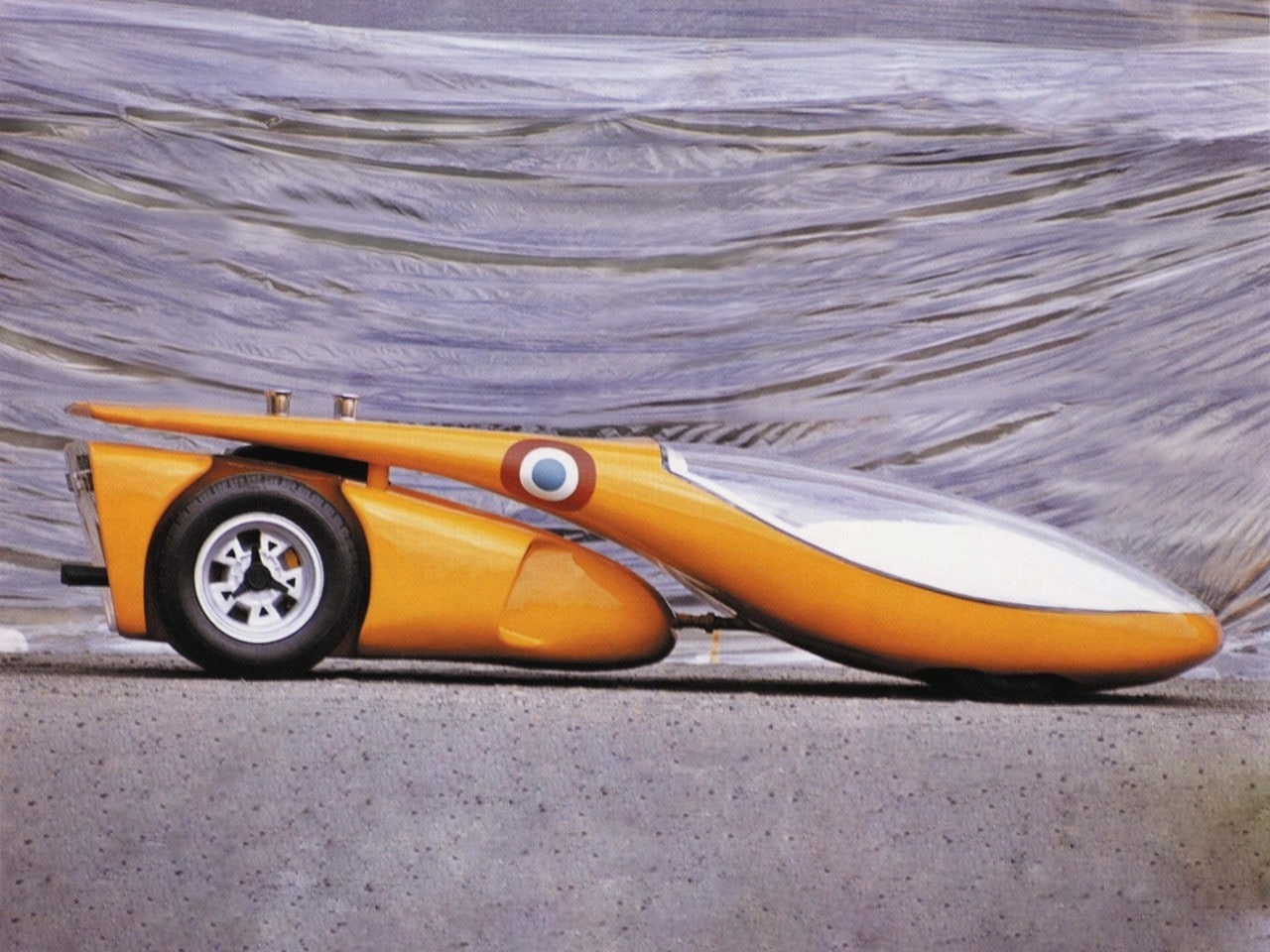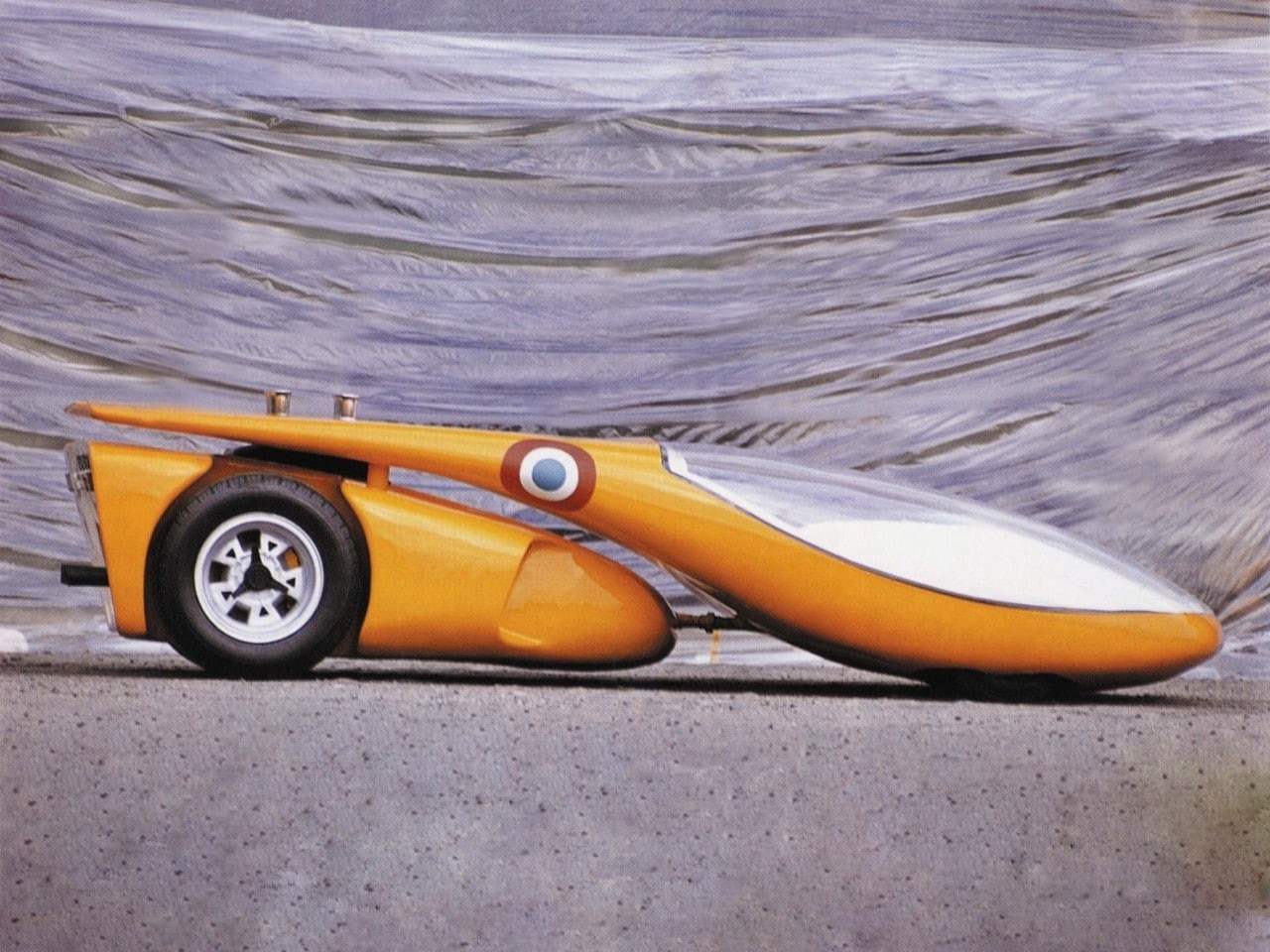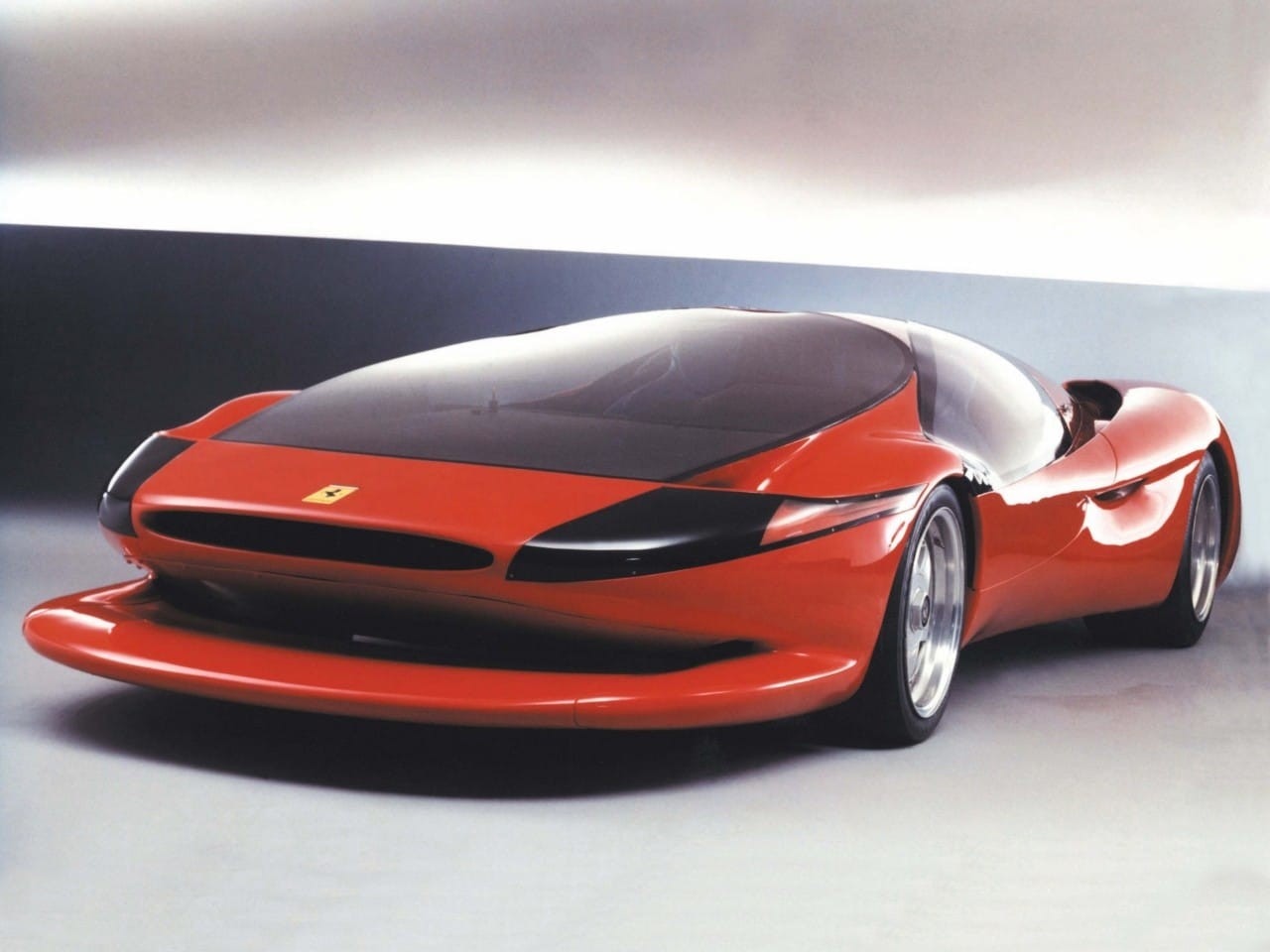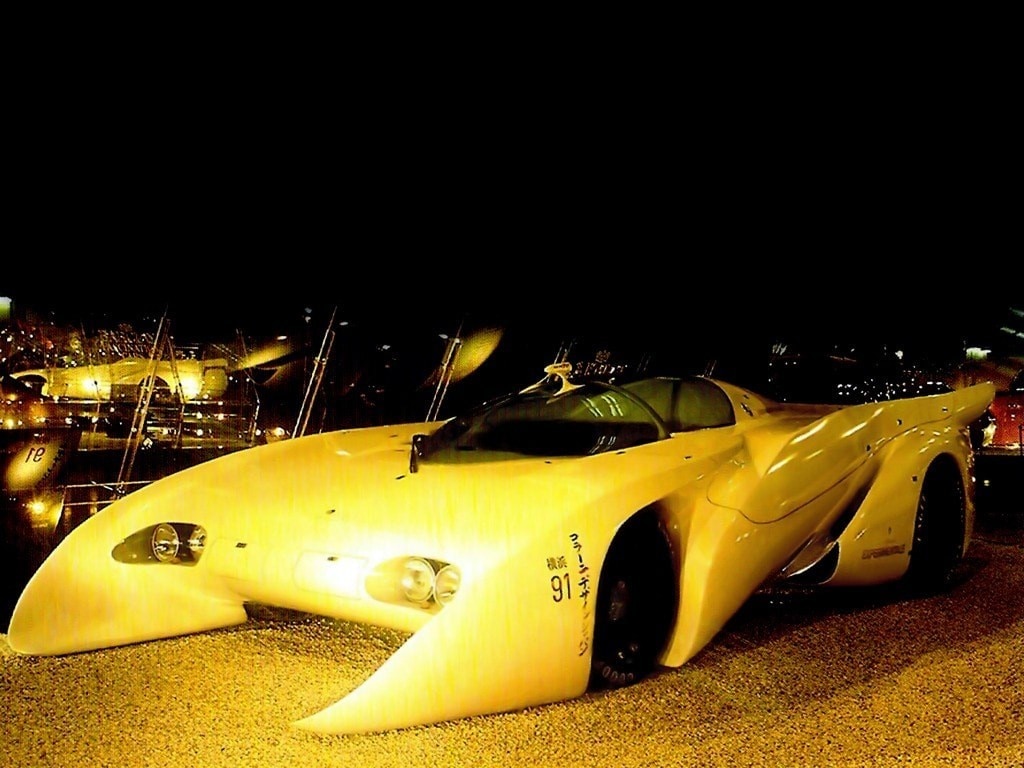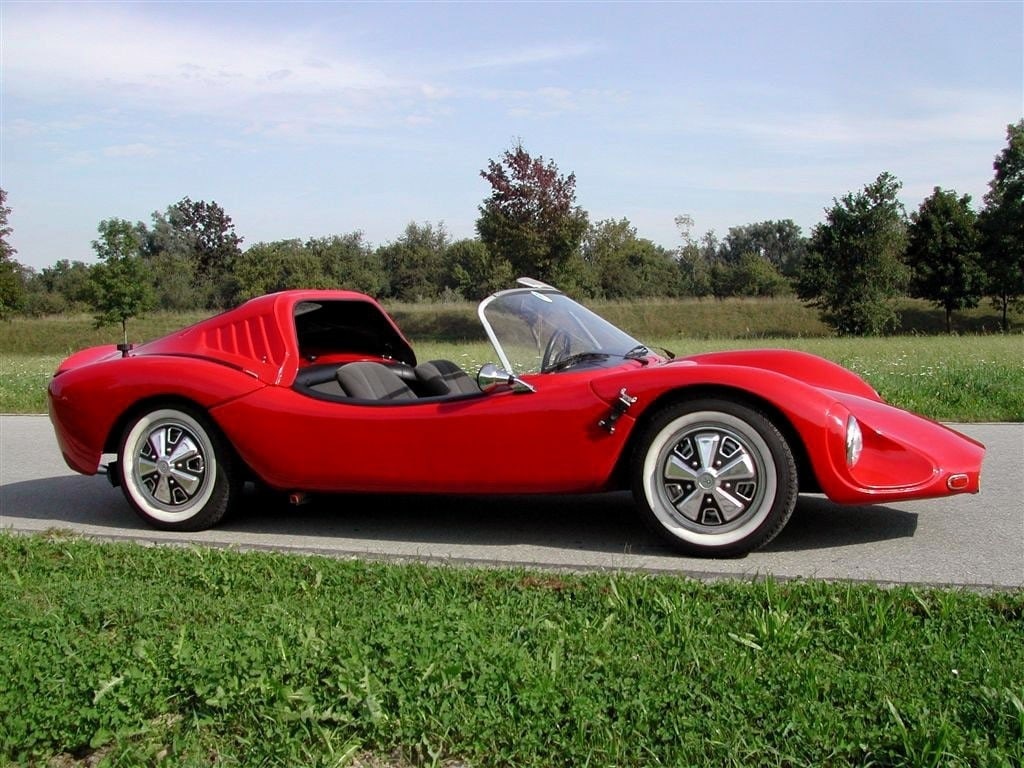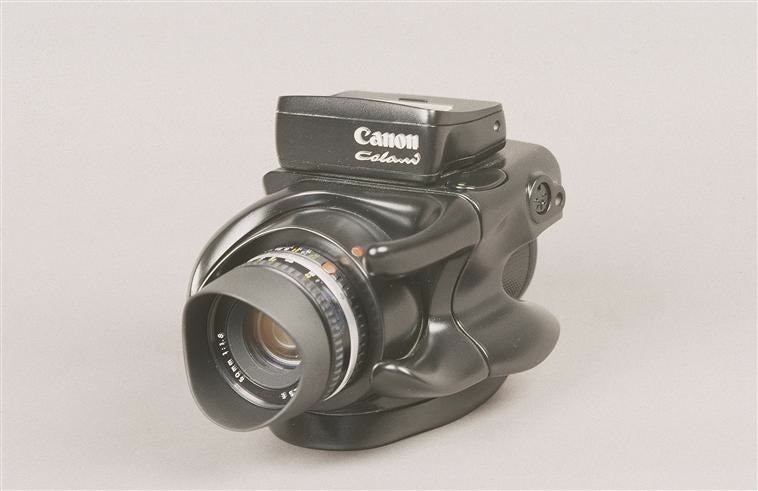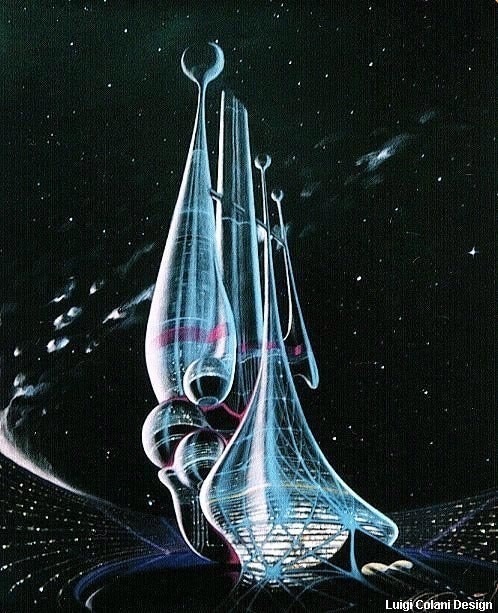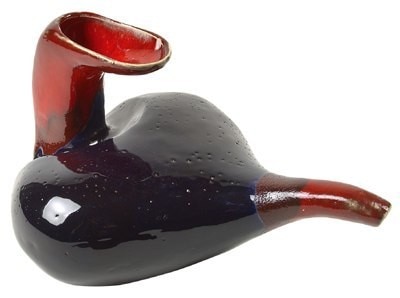Whatever you may think of the man, Luigi Colani is a phenomenon. No other designer has managed in the course of his career to bring down, so to speak, so many pithy formulations on to himself. He has been described as court jester, big-mouth, loud speaker, provocateur, compulsive offender, visionary, charlatan, enfant terrible, or alternatively as the Cassius Clay, Inge Meysel or David Hasselhoff of design. He has been mocked as the ‘naturopath’ of the design world, or as a purveyor of tack, but also venerated as the Leonardo of plastic.
Of course Colani – himself not backward in coming forward – is not exactly guiltless in all this, as evidenced by many of his brazen self-assesstments. Whether he proclames: “I am the living indictment of the mediocrity of the world around us, or “The purpose of my life down here is to pay off the mortgage of genius”, whether he sees himself exposed to “sinister persecution” and thinks of himself as an intellectual terrorist, the “Baader-Meinhof of design”, or else – in a juicy sound-bite – describers 99.9 % of his design colleagues as ‘twits’: Colani was always certain of his place in the German headlines.
Quite indipendently of his work as a designer, his major contribution is doubtless to have made the (English) word ‘design’ a household word in Germany. Although hardly acknowledged by the serious German design media - or if at all, then only with very bad grace – he has succeeded, thanks to numerous television appearences and countless articles in daily newspapers and weekly magazines, in making himself the personification of the designer. As a result, criticism of Colani can only mean criticism of the media. When he thunders: “Colani has murdered the Bauhaus”, the words stick.
Legend has it that even at the age of four, Colani – born in Berlin as Lutz Colani in 1928 – was a wizard with the soldering iron, which he used to make the toys his parents refused to give him. After studying painting and sculpture at the Hochschüle für bildende Künste in Berlin. Colani went to Paris, where he studied aerodynamics and drew futuristic studies for cars and motorcycles magazines. In 1954 he returned to Germany, where he worked for the car-body builders Rometsch and Erdmann & Rossi. During this period, too, he designed the Colani GT Spider, the only one of his car-bodies designs to have been produced in any significant quantity to date. Some 150 of these were produced, designed to be mounted as a kit-car on a VW chassis.
His enthusiasm for vehicles and aircraft of all kinds – which still continues – was to become a central component of his design work. But all his designs since this period have been pervaded by a certain formalism. Whether he’s designing motor-cycles or tea-pots, transport aircraft or chairs or beer-glasses, designer Colani always pays homage to the round, the aerodynamic, the ovod, giving powerful expression to his central philosophy: “Straight lines have no right to exist”.
Colani is convinced that almost all design questions have already been answered by Nature. His favourite car, aircraft and ship designs have all been inspired by observations of the natural world, by the morphology of birds and fish. Colani regards himself as superior to computers, and doesn’t use them for the design even of highly complex, dyamic objects. “If I design a high-speed form, I try to understand what nature would have done. If I am building a hyfrodynamic shape, I look at the shark and its shape: 140 million years without change – is that success?”.
Colani is convinced that almost all design questions have already been answered by Nature. His favourite car, aircraft and ship designs have all been inspired by observations of the natural world, by the morphology of birds and fish.
Thus were born objects such as the shark-inspired “Megalodon” passenger aircraft of the future, or the model of the ocean-going sailing yacht whose exemplar was the plankton-eating whale. That the technical facts did non always accord with his enthusiastic expectations, and that Colani himself bothered little or not at all with the technical problems of production, seems to have done nothing to impair the attractiveness of his sculptural, nature-inspired and occasinally dramatic ‘biodesign’ among broad sections of the public. Logically, Colani describes what he does not as design, but as 3-D philisophy.
As he made clear in his interview with Domus/Mendini (No. 683) as long ago as 1983, he sees all this as better represented from the position of an ingenious artist-cum-engineer: “I am not a designer. I’m an engineer and a sculptor at the same time. Luckily I never studied design”. When asked about his three favourite designers, he replied: “I won’t tell you even one name” – before goung on to name Antoni Gaudí, Hieronymus Bosch and François-Auguste-René Rodin. (Although it must be said that in an earlier interview (Playboy 11/79) he acknowledged Raymond Loewy as his exemplar).
Certainly his approach is more that of a sculptor than of a designer: “I make hundreds of sketches, very fast sketches, like Rodin did, three-dimensional sketches. I’m doing the same thing, not much differently, for a car-body”. But not even his constant insistence on being an unrecognized genius, nor yet the affinity he claimed with great artists of the past, could keep him from questionable borrowings from art nouveau, or from producing ‘erotic’ fashion items. This too is part of Colani’s personality.
Throughout the 1970s and 80s Colani worked tirelessly on his image of the brilliant, incorruptible designer type, and became the first to use the media in a congenial fashion. For example, Germany’s biggest-selling weekly magazine, Stern, gave him regular space to shower scorn over the whole range of current automobile design, in order to present his own visions at the same time. On the one hand, his operetta manner and Italian-sounding name appealed to broad sections of the German public which had been having a love-affair with Italy since the nineteen-fifties, while on the other, and in addition, his designs and suggestions were in a strange way in accord with the euphoria and the blind belief in progress characteristic of the perios.
His popularity has always stood in stark contrast to the massive criticism of his designs which he had to take the whole time from other designers and design associations. His spherical kitchen, for example, which is reminiscent of certain designs by Joe Colombo, eas described as ergonomic nonsense, with which no one could be happy (Michael Conrad), and there was probably no-one who had not yet burnt their fingers on his tea-pot (Ludwig Walser). One of the most popular accusations was that Colani might produce sensuality, but had long since producing sense. Time again it was calimed that while he had popularized the term ‘design’. he had at the same time made it difficult to take seriously.
In all this, it should not be forgotten that Colani dor quite a while spearheaded the fight against German functionalism. During the 1970s, when Bauhaus-Ulm-Funcionalism represented the prevailing professorial opinion at German design academies, Colani appeared to many students as an attractive and in many ways necessary counterweight. However often he might have gone over the top, both in his rhetoric and in his designs, it was he who seemed to open another dimension of sensuality for the product world.
In 1972, Colani and his team moved to Schloss Harkotten, a château in Füchtorf/Sassenberg. Among his clients at the time were various furniture manufacturers, and such well-known companies as Volkswagen, BMW, the Rosenthal procelain manufacturers – for whom he also designed an item of furniture – and the makers of sanitary equipment, Villeroy & Boch. The organic-shaped bath-tubs and washbasins he designed for the last-named were – it should be said – in production for more than twenty years.
The tragedy of Colani’s career is probably the fact that someone who says: “My real job is to create e new environment for man” has seen such a tiny fraction of this environment actually implemented. In contrast to the relatively few products implemented and successful in the market are the countless visionary suggestions which remained just that. This whole area of his sometimes pretty bizarre prophecies, which arose in total isolation from any industrial production, yet to which he owes a great deal of his popularity, first received a platform in three special editions of the Japanese magazine Car Styling, the first number of which appeared in 1978. Here, Colani was able to disseminate in detail his dramatic and fantastic ideas and models, along with his nuerous world-record attempts, and to fantasize about their implementation and about future projects. Although here as elsewhere he pursued the tactic of offering his ideas and prophecies unsolicited to reputable manufacturers, he has not to this day succeeded in designing a car for volume production.
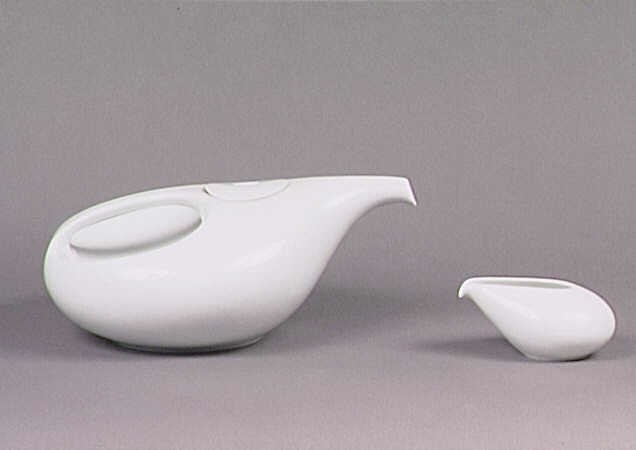
Probably not least for this reason, he decided in the early 80s to go to Japan. It is here that his hitherto most important objects – from the global-market point of view – have been implemented. His collaboration with Sony gave birth to a hi-fi headphone, and although the company now claims that their designers profited from this collaborations with Colani, the benefit has not resulted in visible consequences for Sony’s design concept. Following a dispute over royalties, they went their separate ways. More fruitful was the collaboration with Canon, whose concept of the camera as a “hand-tool” coincidd perfectly with Colani’s design visions. The Canon T90, which emerged from the prototypes which he produced for the company between 1983 and 1985, was to have a lasting influence on camera design.
But Japan too, which appeared at first to welcome him with open arms, he left, as he had so many other places and manufacturers, by his own account an unrecognized genius. 1988 saw him return to Europe, where he worked for, among others, computer manufacturers Vobis, designing computer peripherals. Colani’s last strategic move to date was to move his studio to near the French town of Toulouse – the home of Aérospatiale, Airbus, Ariane and Hermes and thus the heart of the European aerospace industry. Perhaps this was a last attempt to see at least a part of his aerodynamic and design fantasies implemented in the aerospace sector.
(Even though neither Serge roque, design manager for the Airbus cockpit, nor Bernard Humbert, technical director of the Hermes programme, know anything of the collaboration Colani mantains exists).
But perhaps Herr Colani will shortly really be needed in China. His latest project is a town based on the human metabolism, whose central theme is supposed to be ”a new ethic and depth-ecological respect”. One last time, Colani is showing what he understands by “learning from nature”. This town, in the form of a recumbent female skeleton, is intended to be sited in China on the island of ChingMing in the Yang-Tse delta, and to be populated by 15,000 Chinese scientists.
According to Colani’s ideas, the head of this town-planning utopia will contain the administration, while the heart will accomodate a power-station. The lungs will be parks, while the arteries will house staircases, elevators and tramways; the arms, held away from the body, will be runways. The feet of this monumental fantasy are conceived as towers several hundred metres tall.
In a world in which design is being increasingly understood as a rational, complex and anonymous process, Colani and his world of forms embody the image of the eroic designer of the 30s and 40s. In addition, ha has stood by his philisophy of nature-inspired, aerodynamic ‘biodesign’ in good times and bad, and has as a result found himself quite simply sometimes more and sometimes less at the focus of current movements and fashions. At the moment it looks as if his language of forms could achieve a greater currency once more in the senseof the retro-aesthetic which can be found, for example, in the techno-movement.
Particularly in Japan, where Colani’s influence is most palpable, there have appeared on the market in the last five years a whole series of consumergoods which come surprisingly close to this language. How visionary should we consider the 1972 training-shoe prototype to be, against the background of current training-shoe design? In view of the complexity and contingency of current technological developments, it does nevertheless seem as though all this had passed Colani by and left no traces. Against the background of information technologies, his work looks like a very old and romantic idea of the future.


